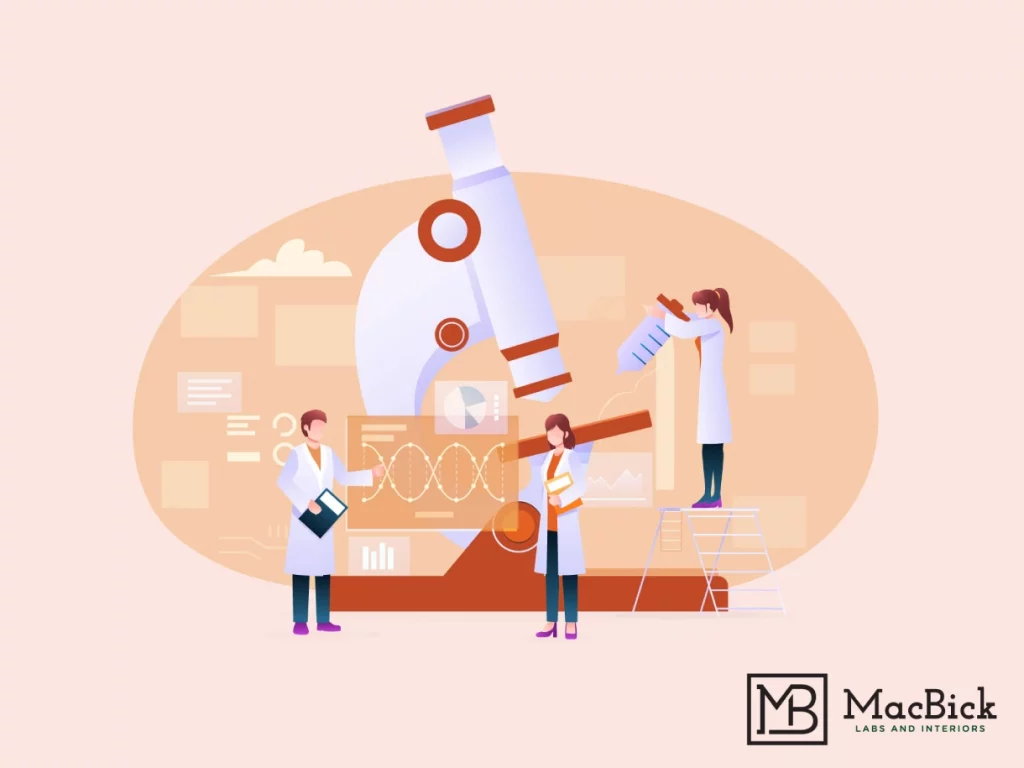Laboratories have undergone a notable transformation in recent years in adjusting design layouts in response to new scientific breakthroughs and a heightened focus on collaborative research. The labs with such design layouts create innovative scientific environments that inspire creativity and foster interdisciplinary collaboration.
Let’s get deep into this exploration and navigate the ever-changing world of laboratory spaces, unraveling the secrets to amplify flexibility and collaboration in your scientific endeavors.
The Need for Collaboration and Flexibility in Laboratories
The traditional laboratory setups presented various challenges in keeping up with the fast-paced advancements in scientific research. The inflexible infrastructure, inefficient resource utilization, and suboptimal use of space hindered the collaborative work for the scientific endeavors in the labs. It showed the need for a more adaptable and collaborative environment.
Strategies for Enhancing Flexibility & Fostering Collaboration in Labs
The right lab design can create an environment that thrives on collaborative efforts, fosters innovation, and pushes the boundaries of scientific exploration.
Take a look at the strategies that can enhance the flexibility of your lab space.
Integrating Modular Casework in Lab Spaces
Integrating modular casework in the laboratories, including storage units, aligns precisely with the diverse needs. It ensures the researchers have an optimal environment to store specialized equipment and efficiently perform experiments. Moreover, modular casework facilitates enhanced collaboration by providing spaces that can be easily configured for teamwork.
Flexible Furniture Solutions for Dynamic Labs
Invest in ergonomic furniture to prioritize the health and comfort of researchers. Flexible seating arrangements such as ergonomic chairs with lumbar support and modular benches contribute to a healthy workspace and facilitate dynamic discussions. Also, design collaborative tech spaces with furniture configurations that facilitate the use of electronic devices for collaborative projects.
Implement Technology to Support Remote Collaboration
Integrating technology in virtual lab environments simulates physical lab setups, allowing researchers to access and conduct experiments remotely. These immersive technologies facilitate virtual lab tours, training sessions, and collaborative problem-solving.
User-Centric Design Approach
A user-centric approach ensures that the lab environment is tailored to the specific requirements of researchers, scientists, and laboratory staff. It allows researchers to customize their immediate work environment based on the nature of their projects.
Cybersecurity Measures
Ensure end-to-end encryption for all digital communications within the research network to bolster security. This measure provides comprehensive protection and safeguards data from cybersecurity threats. Moreover, it instills confidence in data exchange and preserves the integrity and confidentiality of valuable research data.
Create Separate Zone in the Labs
Partition laboratory space into different zones to conduct different research activities. It enables researchers to allocate resources more efficiently and provides flexibility for future expansion. Moreover, it allows the different teams to come together, share ideas, and contribute to an innovative research environment.
Maximize Agility & Efficiency in Labs
Laboratories can balance agility and efficiency by creating an environment adaptable to changing research needs. It maximizes productivity and collaboration among the researchers. It ensures the lab space is optimized for usability, comfort, and productivity.
Conclusion
In the ever-evolving realm of scientific research, the lab’s ability to adapt to changes and foster collaboration emerges as a cornerstone for success. The traditional infrastructure of laboratories is no longer conducive to the dynamic nature of contemporary research.
Instead, flexible lab environments fostering collaboration remain at the forefront of groundbreaking discoveries. These integral components create a more effective and innovative laboratory space that pushes the boundaries of what is possible in pursuing scientific excellence.
Reach out to MacBick Labs and Interiors to revolutionize your lab spaces, setting new standards for excellence and collaboration!


